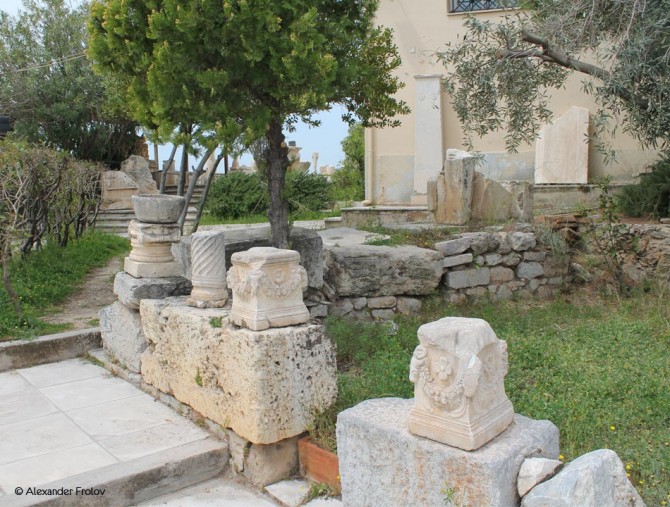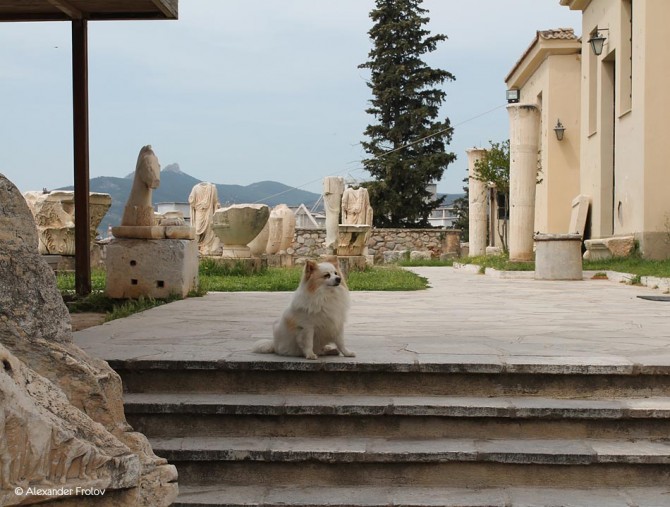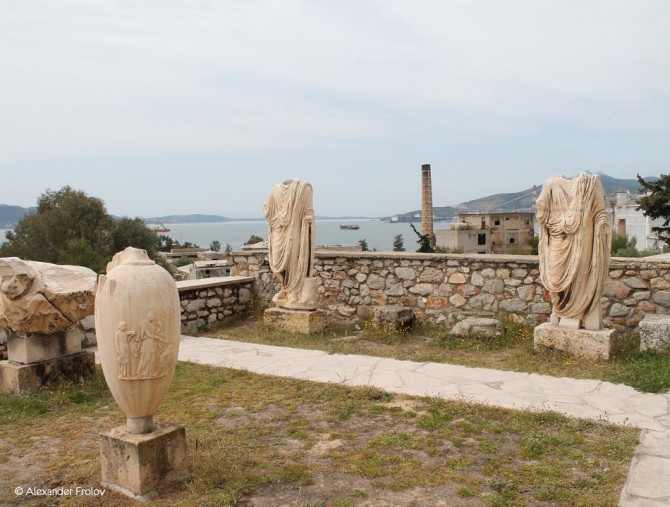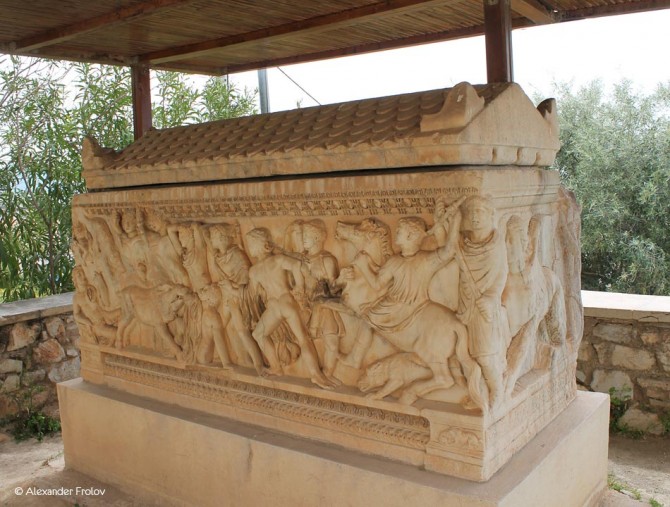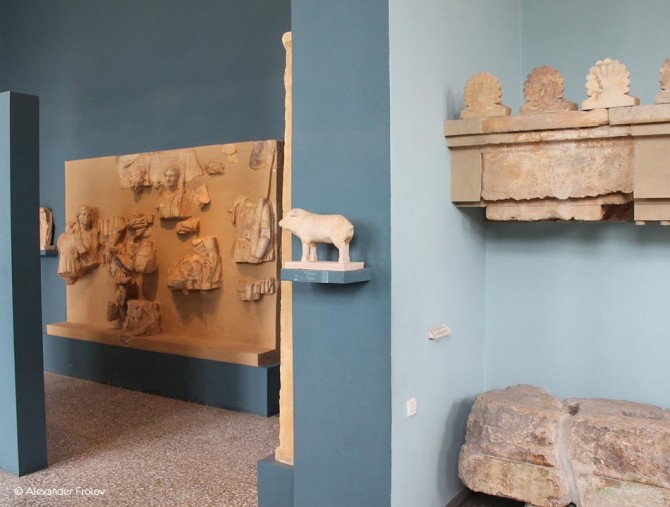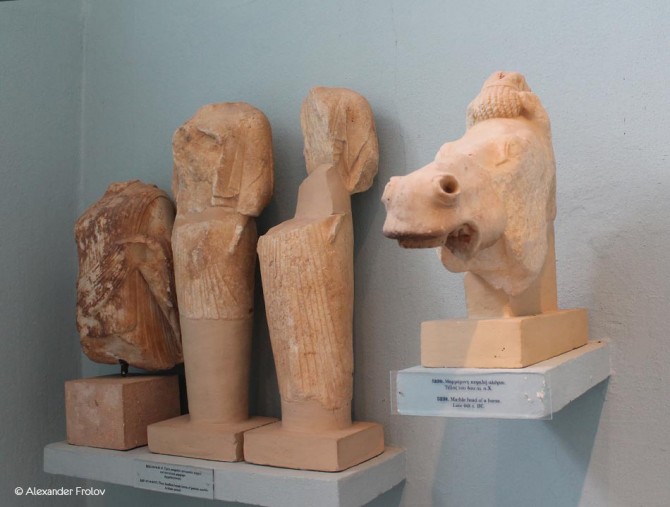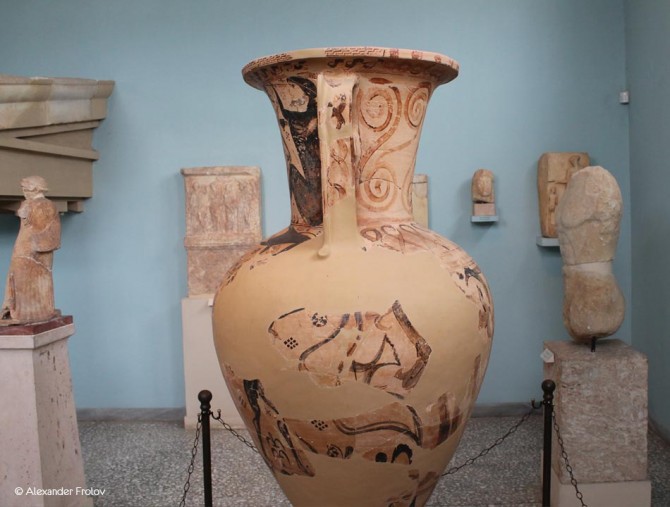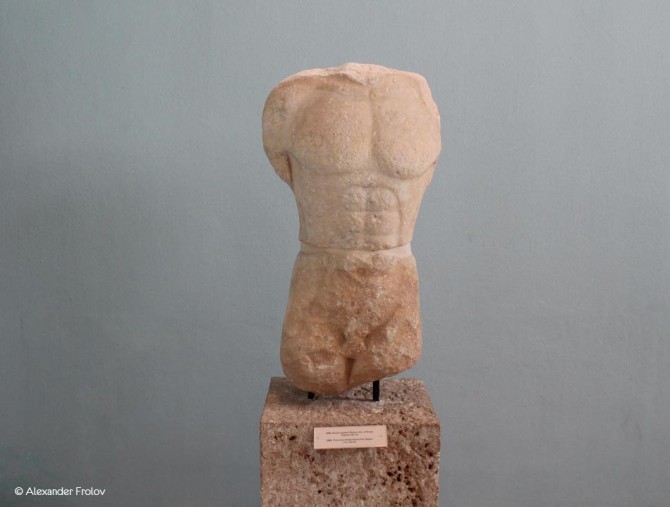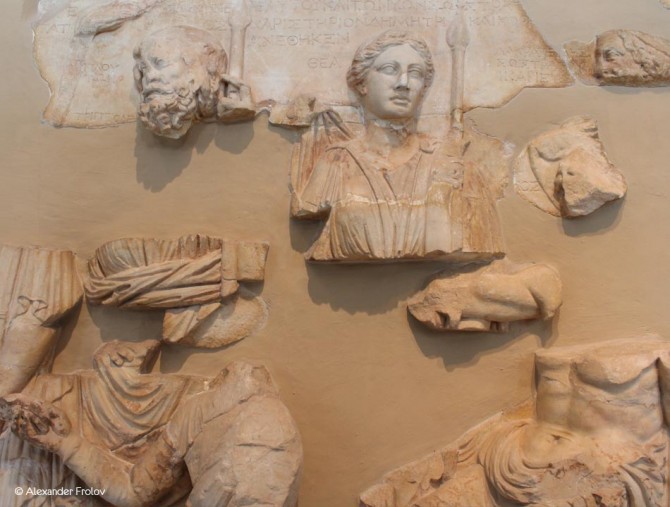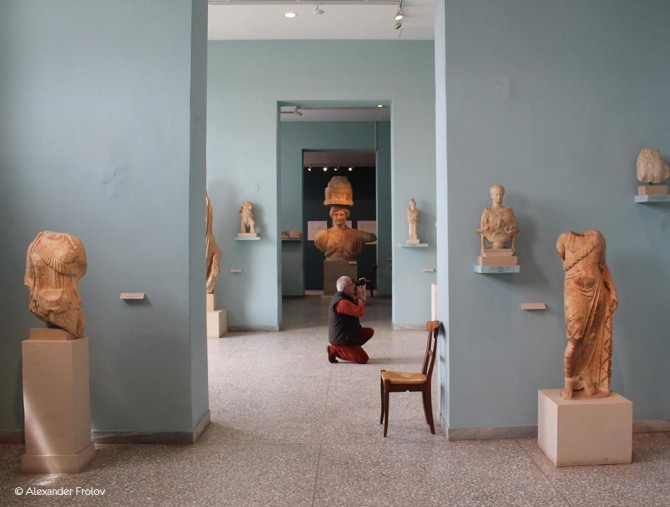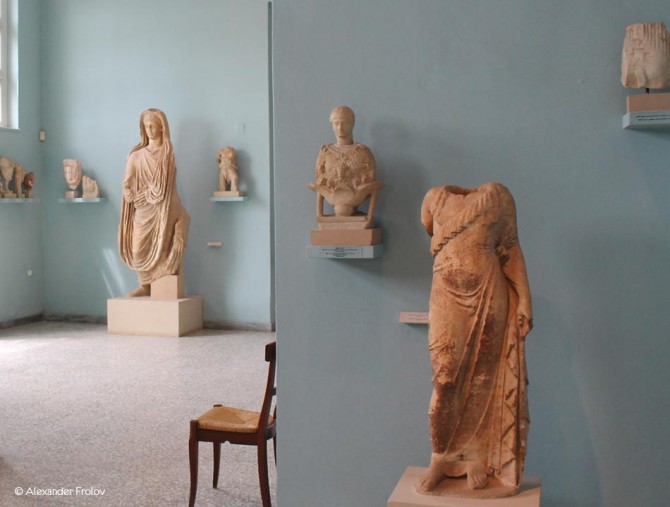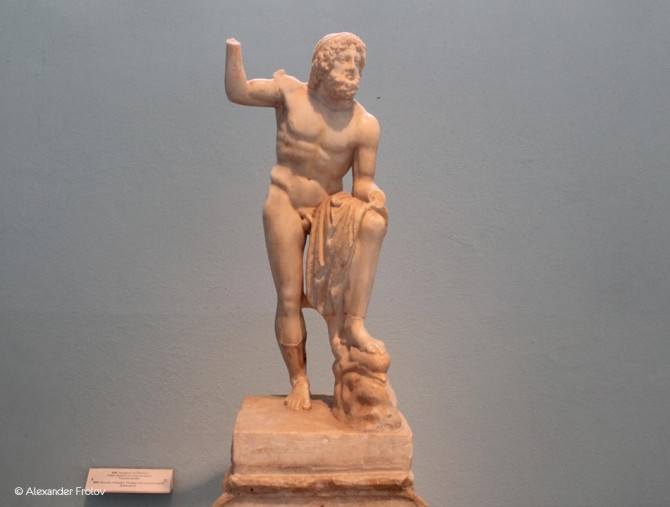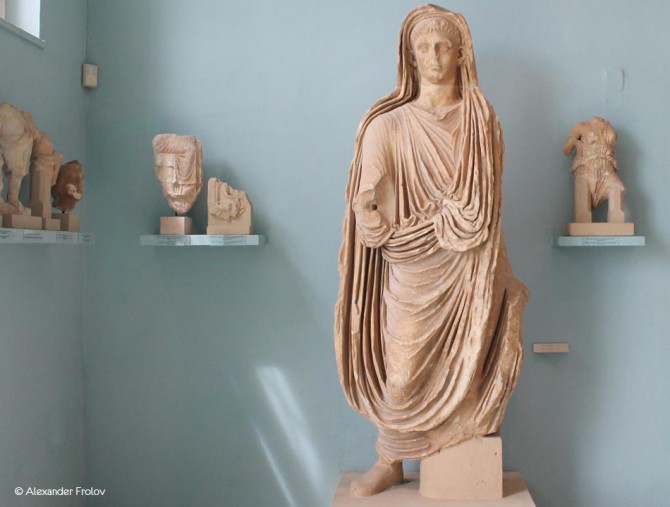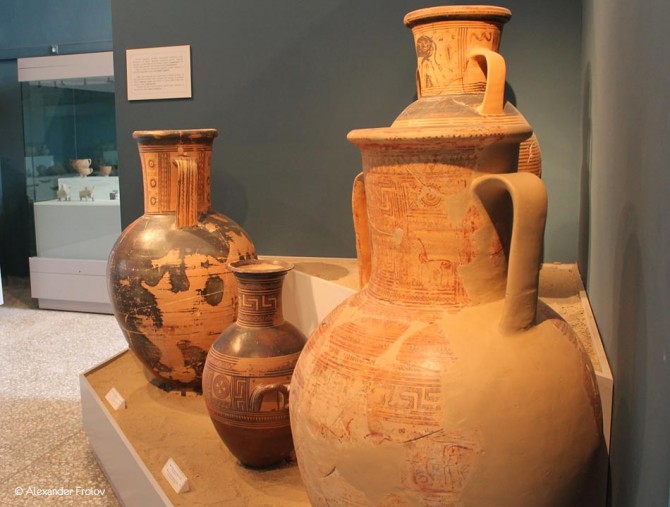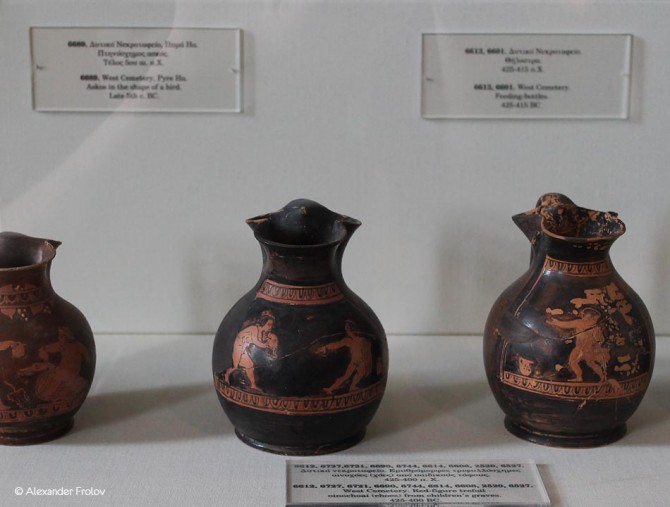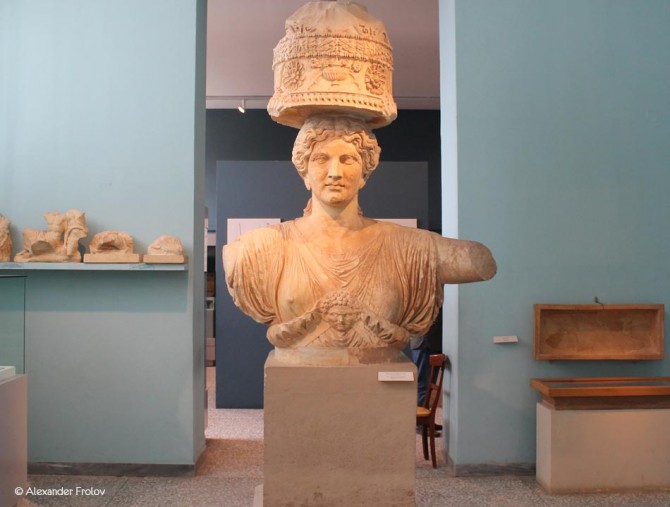Археологический музей Элефсина
Коллекция Археологического музея весьма обширна и разнообразна и охватывает огромный отрезок времени, начиная с 20-го века до н.э. и заканчивая раннехристианским периодом. В музее вы сможете увидеть великолепную коллекцию керамики, скульптуры, различные архитектурные фрагменты, изделия из металла, надписи, рельефы. Что немаловажно -значительная часть экспозиции имеет непосредственное отношение к Элевсинским мистериям.
Два самых ценных экспоната найденные в ходе раскопок – это огромный рельеф (высота около 2,2 м), датирующийся 5-м веком до н.э. с изображением Деметры, Персефоны и царя Элевсина Триптолема, а также глиняная табличка (около 370 года до н.э.) с фрагментами Элевсинских мистерий. Сегодня эти уникальные артефакты хранятся в Археологическом музее Афин, а в элевсинском музее представлены копии. Впрочем, и в элефсинском музее есть немало интересного.
Музей разделен на шесть залов. Один из самых интересных и ценных артефактов представленных в музее, знаменитуая элевсинская амфора (VII век до н.э.) с изображением сцен, где Одиссей ослепил циклопа Полифема, а Персей обезглавил Медузу Горгоны находится в первом зале. В том же зале можно увидеть скульптуру с фронтона элевсинского святилища (490-480 г до н.э.) - так называемую “Летящую Кору”, которая была частью убранства Священного дома. Не менее интересны и мраморный саркофаг римской эпохи с изображением сцены охоты на калидонского вепря (II век н.э.), которые находятся в во дворе музея. Безголовые статуи Деметры (V век до н.э.) и Асклепия (IV век до н.э.) находятся во втором зале. Амфора с чернофигурной вазописью (520 г до н.э.) располагается в третьем. Также стоит обратить внимание на кариатиду (I до н.э.) с Малых Пропилей и две гипсовых модели, дающие представление о том, как выглядело древнее святилище в VI веке до н.э. и в римский период.
Часы работы музея: вторник-воскресенье 8:00-15:00
Цена билета: 3 евро, 2 евро (льготный). Этот билет также дает право посещения археологических раскопок Древнего города.
Как добраться до Элефсина:
- на машине из Афин (21б5 км) по трассе Афины-Коринф Е08
- на пригородной электричке из Афин, станция Магула, далее на автобусе 863. На электричку можно сесть на станции Неразьетисса
- на автобусах А16 и В16 из Афин. Автобусы отправляются с площади Кумундуру, станция метро Эставромну (3 линия)
- на автобусе из Афин, следующем до Валлии и Мегары (остановка Элефсин). Автобусы отправляются с площади Агион Асоматон, станция метро Тиссио
Фото и текст: Александр Фролов
The Archaeological Museum of Eleusis
All the archaeological finds from the sanctuary of Eleusis and the cemetery of the ancient city are hosted in the Archaeological Museum, which is located at the north-east side of the Acropolis of Eleusis. The building was built in 1889 -1890 by the architect Ioannis Moussis and was renovated in 1960.
A marble sarcophagus from the Roman times (2nd c. AD) depicting the hunting of the Calydonian Boar (according to mythology, it was a huge and overly strong boar, which had been sent by the goddess Artemis as punishment to Eneas, king of Calydon in Aetolia, for his irreverence. The Boar killed farmers and destroyed their belongings. In order to rid the country of the beast, the son of Eneas, Meleager, organized hunting, in which all the mythological heroes of the era participated), two large marble torches, composite capitals of the Small Propylaea and marble funerary vases are the findings that are placed in the courtyard of the museum, introducing you to the world of Ancient Eleusis.
The museum features six rooms: In the room I, you will see a protoattic aphora (650 BC) with a scene of the blinding of Polyphemos (the giant which was blinded by Ulisse in the Homer’s “Odyssey”) on its neck and the legend of Perseus and Medusa on the body (Perseus was son of Zeus. With the help of Athena and Hermes he killed the mermaid Medusa, in order to offer her head to the king of Serifos, Pollux). In the same room, you will also see “The Fleeing Kore” (early 5th century BC) which was part of the decoration of the Sacred House. This beautiful ancient sculpture represents Persephone trying to escape from Hades.
In the room II, there is the authentic headless statue of Demeter, work of the sculptor Agoraktitos (late 5th century BC). There are also votive reliefs showing Triptolemos (the eldest son of the King of Eleusis, Keleus) trying to spread the knowledge of how to cultivate the land.
The room II presents the also original headless statue of Asclepius (the god of Medicine), dated from the 4th century BC, an archaistic statue of a Kore (kore was the name of the female statues in the archaistic period) and a statuette of Poseidon, the god of the sea, which is a roman copy of a work by Lysippos.
In the center of the room IV, two plaster models which depict the sanctuary in the 6th century BC (above) and in Roman times (below) give us an idea of its ancient grandeur, while in the room V, you will be impressed by the huge statue of a Kore, which was the one of the two Katyatids that supported the roof of the Small Propylaea (1st century BC).
The tour in the world of the ancient Eleusis ends in the room VI, which hosts pottery and other small finds from the sanctuary and the cemeteries of the ancient city.
The Archaeological Museum of Eleusis, Eleusis, Attica. Visiting hours: Tuesday-Sunday, 8:00-15:00. Closed on Monday. Ticket prices: Unified ticket (full) 3 euros, (reduced) 2 euros. Valid for: The Archaeological Site of Eleusis, the Archaeological Museum of Eleusis, the Sanctuary of Venus Skaramagka.
How to get there: By car from Athens (distance 21,5 km) via Athenon Avenue and National Road Athens-Corinth/E08. By suburban from Athens, stop “Magoula” and then with the local bus line 863. By the city bus lines A16 and B16 (starting point Koumoundourou Square in Athens or metro station Estavromenou Square, metro line 3). By bus to Villia or Megara (with stop in Eleusis). The buses depart from the Agion Asomaton Square, Thiseion, Athens (metro station Thiseion).
Τext: Marilou Pantazi

